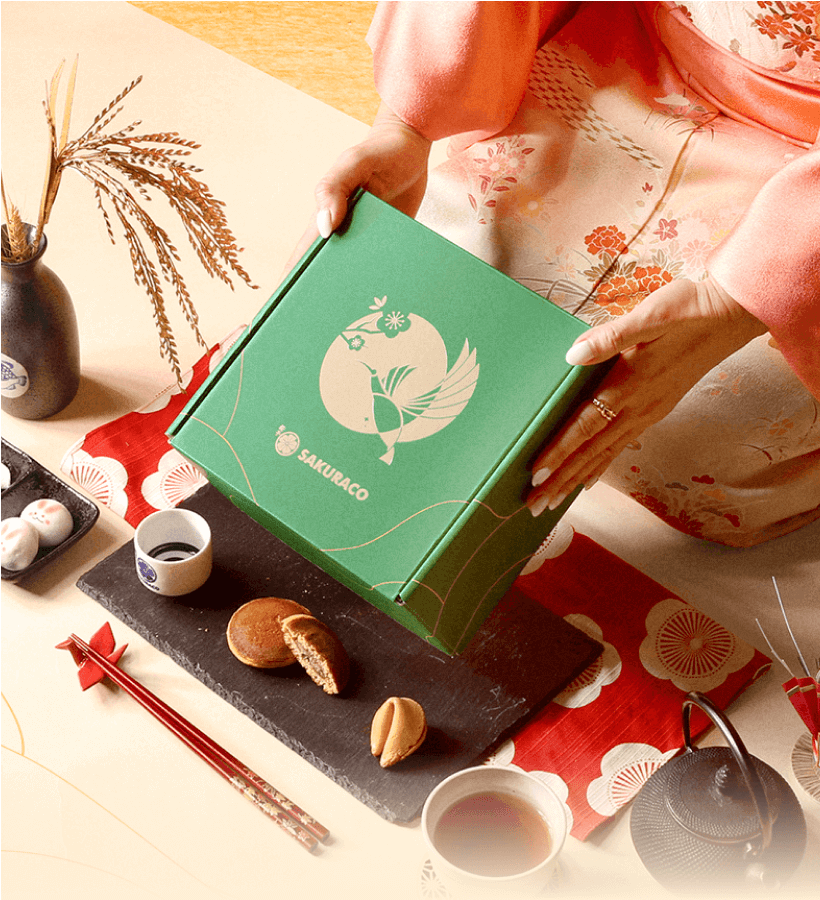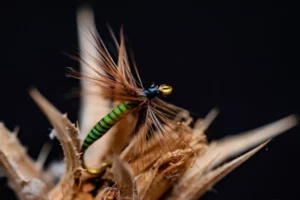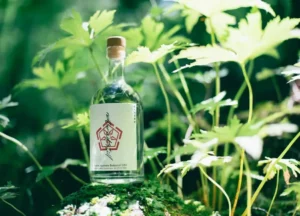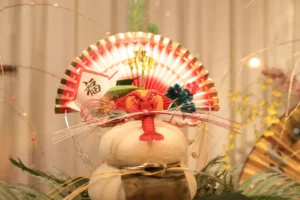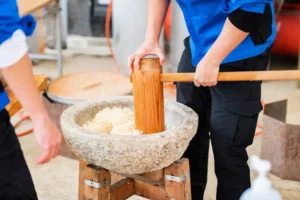Rising at 3,776 meters (12,388 ft), the Mount Fuji summit is truly a sight to behold. On a clear day, you can even see it from Tokyo! This impressive volcano has inspired many poems, artworks, and pilgrimages for centuries. Climbing to the top is a dream for many people, but there’s more to enjoy nearby.
The area around Mount Fuji is filled with beauty, culture, and fun adventures to explore. It’s perfect for stunning views and learning about Japan’s traditions. From Chureito Pagoda’s famous view to Fuji Sengen Shrine’s rich history, each spot has charm and culture. Check out some of the most amazing spots near the Mount Fuji summit for sightseeing and photos!
Table of Contents
ToggleChureito Pagoda: The Iconic Fuji View
If you’ve seen a postcard of Mount Fuji with cherry blossoms and a red pagoda, that’s probably the Chureito Pagoda. It’s in Arakurayama Sengen Park and popular with tourists and locals. You’ll need to climb about 400 steps to reach the pagoda, but the view is fantastic! It was originally built in 1963 as a Peace Memorial.
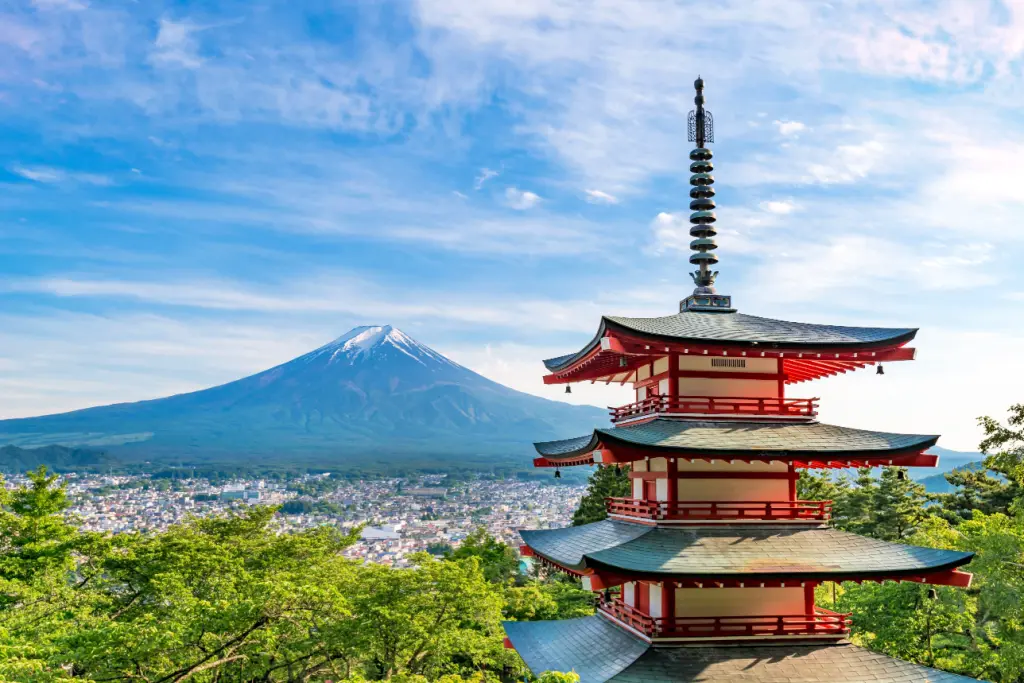
On a clear day, Mount Fuji rises beautifully behind the pagoda. Spring is great for sakura (cherry blossoms); fall brings bright red and orange leaves. The best time to visit is early morning or just before sunset for awesome golden hour photos.
Oshino Hakkai: Tranquility in a Traditional Village
Oshino Hakkai, a quiet village with eight clear spring ponds, is not far from Lake Kawaguchi. The water comes from Mount Fuji’s snow, filtered through lava for over 80 years. Walking here feels like going back in time to old Japan.
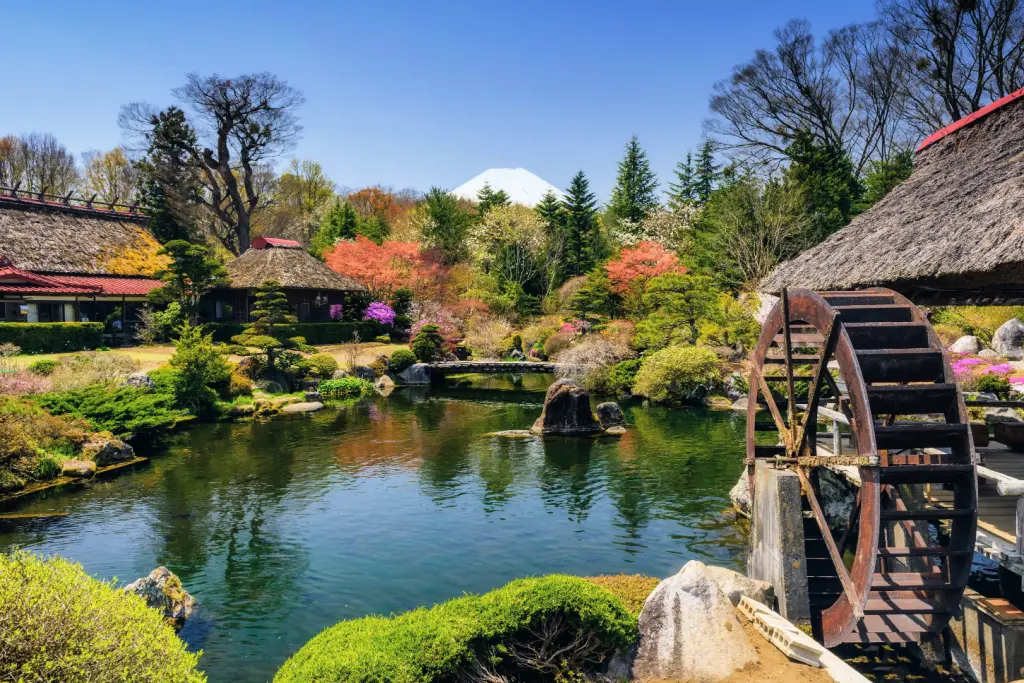
You’ll see thatched-roof houses, wooden bridges, and waterwheels, with Mount Fuji in the background. Try local snacks like sweet mochi (rice cakes), crispy senbei (rice crackers), and refreshing yuzu (citrus) treats. For fun photos, drink fresh spring water and wear a kimono (traditional Japanese robe). Oshino Hakkai is a peaceful place to enjoy nature and see what rural Japan looks like. It’s a great spot for views and culture!
Are you looking for great snacks while visiting Mt. Fuji? Check out Sakuraco! Sakuraco delivers traditional Japanese snacks, teas, and sweets from local Japanese makers directly to your door so you can enjoy the latest treats directly from Japan!
Fuji Hongu Sengen Taisha: The Spiritual Gateway to Mt. Fuji
Before modern hiking gear, climbing Mount Fuji was a spiritual journey. Pilgrims started at Fuji Hongu Sengen Taisha, a shrine in Fujinomiya City on Mount Fuji’s southwest side. Tall cedar trees and peaceful paths surround it.
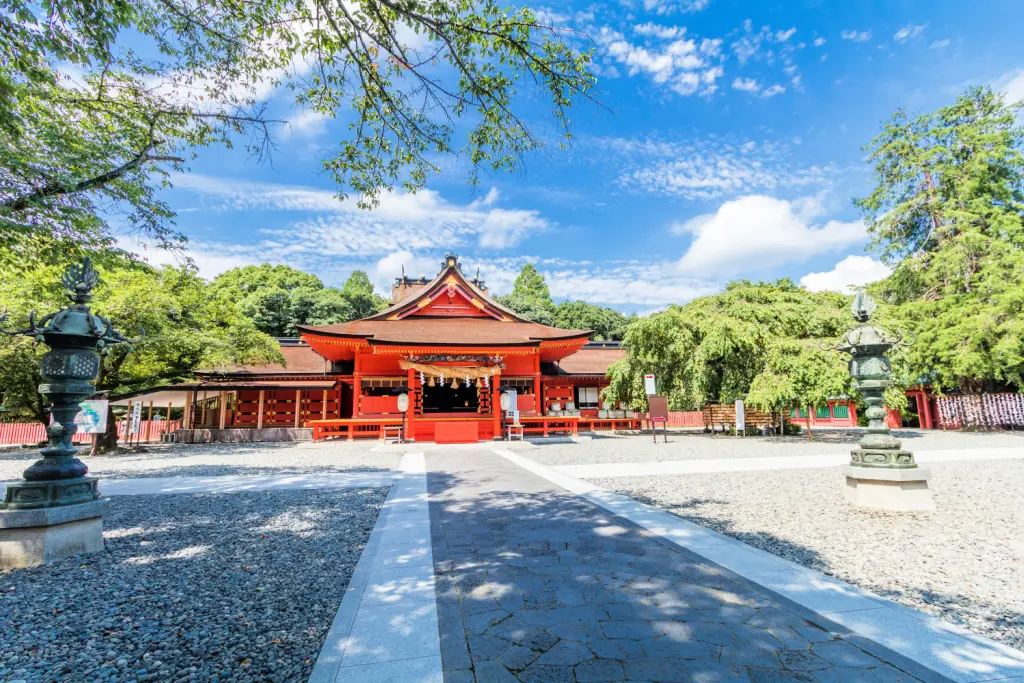
A large torii (shrine gate) stands at the entrance, perfectly framing Mount Fuji on a clear day. It’s a great photo spot! The shrine is over 1,200 years old and honors the mountain’s spirit. It’s full of Shinto history and quiet beauty. Even if you don’t climb Fuji, visiting the shrine helps you understand why it’s so special in Japan.
Lake Kawaguchi: Perfect Reflections of Fuji
Lake Kawaguchi is the easiest to visit and one of the most beautiful of the Fuji Five Lakes. It’s just a few hours from Tokyo and offers fantastic views of Mount Fuji reflected in calm water. The northern shore is popular for photos and nature walks.
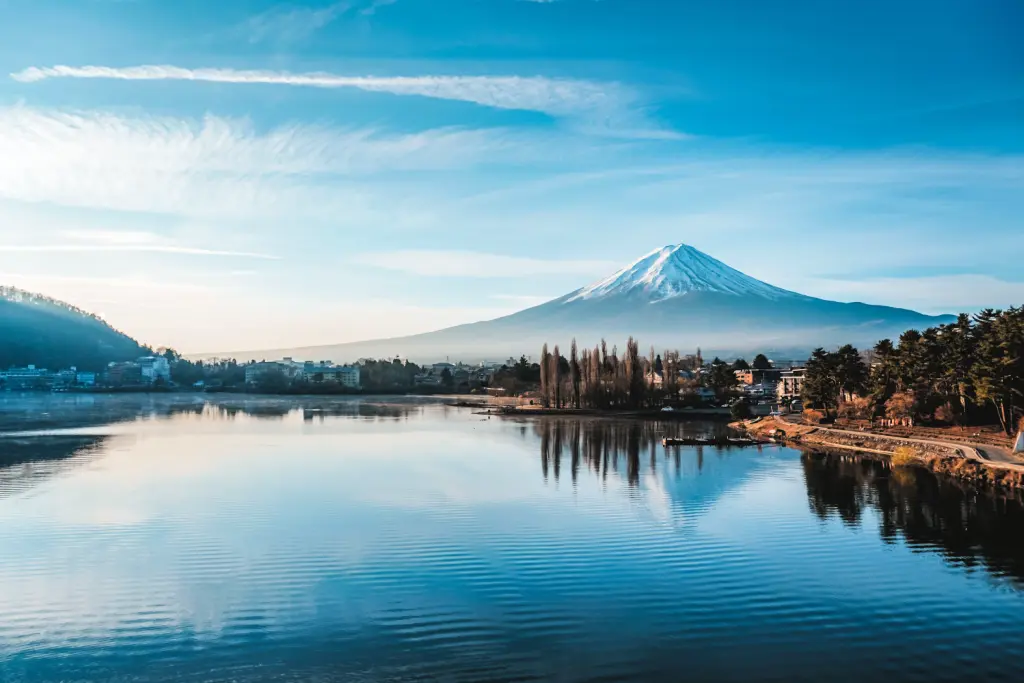
You can take boat rides, bike, or relax in a lakeside onsen (hot spring) while watching the mountain. Flower parks like Oishi Park bloom with tulips and lavender, making colorful scenes. Red maple leaves light up the Momiji Corridor in autumn, creating a magical view.
Would you like to try some snacks from the Mount Fuji area? Check out Sakuraco! Sakuraco delivers traditional Japanese snacks, teas, and sweets from local Japanese makers directly to your door so you can enjoy the latest treats directly from Japan!
Gotemba Peace Park: A Hidden Gem with a View
Gotemba Peace Park is a quiet, less crowded place where you can see Mount Fuji’s beauty. It’s on a hill in Gotemba City with a white tower from India holding Buddha’s ashes. The park offers expansive, clear views of Mount Fuji, which is especially beautiful in the early morning.
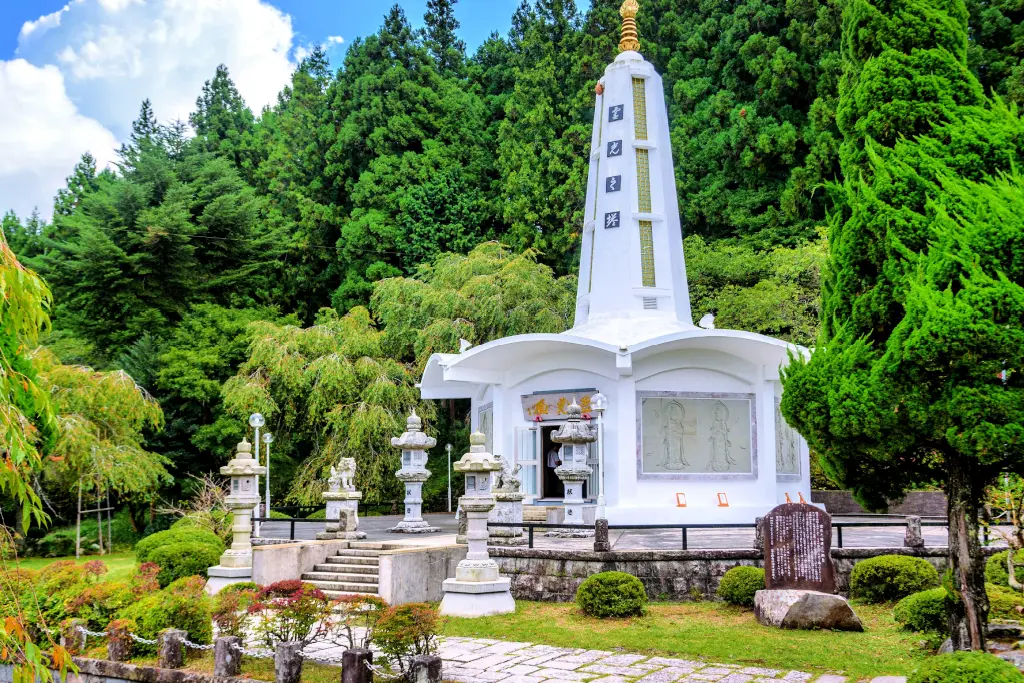
Stone statues of Buddhist figures and peace symbols create a calm spot for walking or meditating. In cherry blossom season, over 1,000 trees bloom, turning the park pink, a perfect peaceful hanami (flower viewing).
Why should I check out places, including the Mount Fuji summit?
People love these views because they show Japan’s culture and nature in one fantastic place. Climbing Mount Fuji’s summit is a big goal many want to achieve, but the beauty around the mountain is just as exceptional and magical. There are peaceful shrines, quiet villages, colorful lakes, and pretty pagodas to explore. This area lets you enjoy nature, history, and culture simultaneously.
So, whether you climb up or watch from below, visit these spots. Each place gives a different view of Mount Fuji and memories you’ll keep forever. What’s your favorite spot to see Mount Fuji? Have you ever visited any of these places? Share your thoughts in the comments below!



